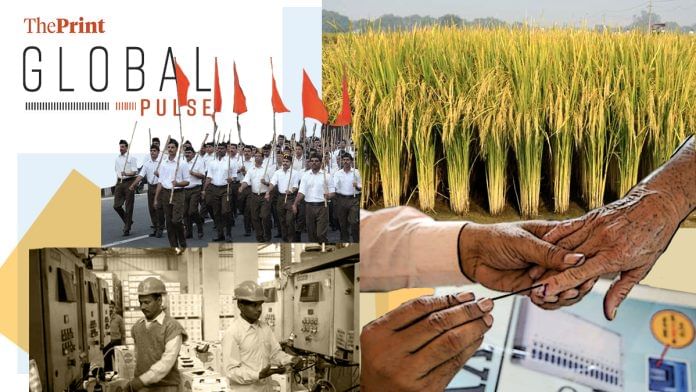New Delhi: A hurdle in the form of Basmati rice has emerged in the India-EU trade deal talks. European Union negotiators are being “pressured” to let India have the exclusive right to use the term ‘Basmati’, Financial Times reports. However, this could cause friction with Pakistan, which is why “Brussels is playing for time”, write Andy Bounds and Humza Jilani, delving into yet another aspect of the India-Pakistan dispute.
“For both India and Pakistan, the grain has long been a symbol of national pride. It is mostly cultivated in the paddies of historic Punjab, the breadbasket region now divided between the arch-rivals who have fought numerous wars over the disputed Kashmir territory,” reads the report.
This rift has also seen moments of unity. In the early 2000s, the two nations had joined hands to upend a Basmati rice patent by a US firm. “But EU hopes that the two countries could work together were dashed when militants, who India and western governments say were backed by Pakistani intelligence, killed more than 100 people in Mumbai in late 2008,” the report notes. “The attacks poisoned the two sides’ willingness to collaborate, even on issues of mutual economic interest.”
Also in FT, an editorial lays out how India can manage the US’ punitive 50 percent tariffs––diversification, focus on easing internal barriers, and “encouraging greater competition among states”. Essentially, all roads lead home.
“India’s greatest source of resilience will come from reforms at home. The world’s most populous nation boasts a rapidly growing middle class, a large pool of Stem-trained workers and states with diverse industrial specialisms, from information technology in Karnataka to automotive manufacturing in Tamil Nadu,” reads the editorial. “Yet India’s private sector cannot take advantage of the country’s scale due to a plethora of onerous local regulations. High logistics costs are another impediment.”
Easing these internal trade barriers would reduce the costs for businesses, helping them expand and become more competitive in international markets, regardless of global trade conditions, it says.
As the Supreme Court hears petitions challenging the Special Intensive Revision (SIR) of electoral rolls in Bihar by the Election Commission of India amid the Opposition’s protests, The New York Times’ Mujib Mashal and Hari Kumar zoom into the state, writing about how the election works there are faring, as the poll body grapples with serious allegations of voter manipulation.
“The result is a protracted mess. Election workers, voters and experts interviewed by The New York Times suggested that the process had not been completed according to the guidelines laid out by the voting body, dimming hopes of a more reliable voter list. Many are questioning how the commission missed the deaths of 2.2 million people during its routine revisions of the rolls, including one only a few months ago,” reads the report, noting that the issue at the heart of the matter is “which documents count as identification”.
“On the ground in Bihar, many local election workers, who spoke anonymously as they were under strict orders from the commission not to talk to the media, said they had no choice but to accept the Aadhaar as proof of identity from very early in the process. It became clear right away that a large number of people did not have any of the listed documents,” the report adds.
2025 marks 100 years of the Rashtriya Swayamsevak Sangh. The Economist looks at the “world’s largest volunteer organisation” & how at its very core lies its want to make India a Hindu-first nation.
It says that on some core issues, “the RSS has seemed willing to bend”.
“But on one goal the RSS has not wavered: its wish to make India a Hindu-first nation. And in many regards, that mission is looking close to complete. Some long-prized objectives have been achieved, such as the deeply divisive construction of a temple on the ruins of a destroyed mosque in Ayodhya (approved by India’s Supreme Court),” the article reads. “Hindutva has seeped into public life; even politicians who oppose the BJP see advantage in portraying themselves as committed Hindus. Many Muslims live, in practice, as second-class citizens.”
However, referring to RSS chief Mohan Bhagwat’s recent spate of speeches where he has warned of threats to national unity, the article says that the group “seems restless”. “Organiser, the RSS publication, carries outlandish stories about supposed risks that Muslims and others pose to Hindu culture. The RSS is fuelled both by confidence and paranoia.”
The article ends with an important question: “Can the RSS hold on to the clout it has accumulated?”
(Edited by Mannat Chugh)
Also Read: Why Trump push for higher tariffs on India, China puts G7 in a bind & Delhi’s ‘hidden war’ on Naxals






